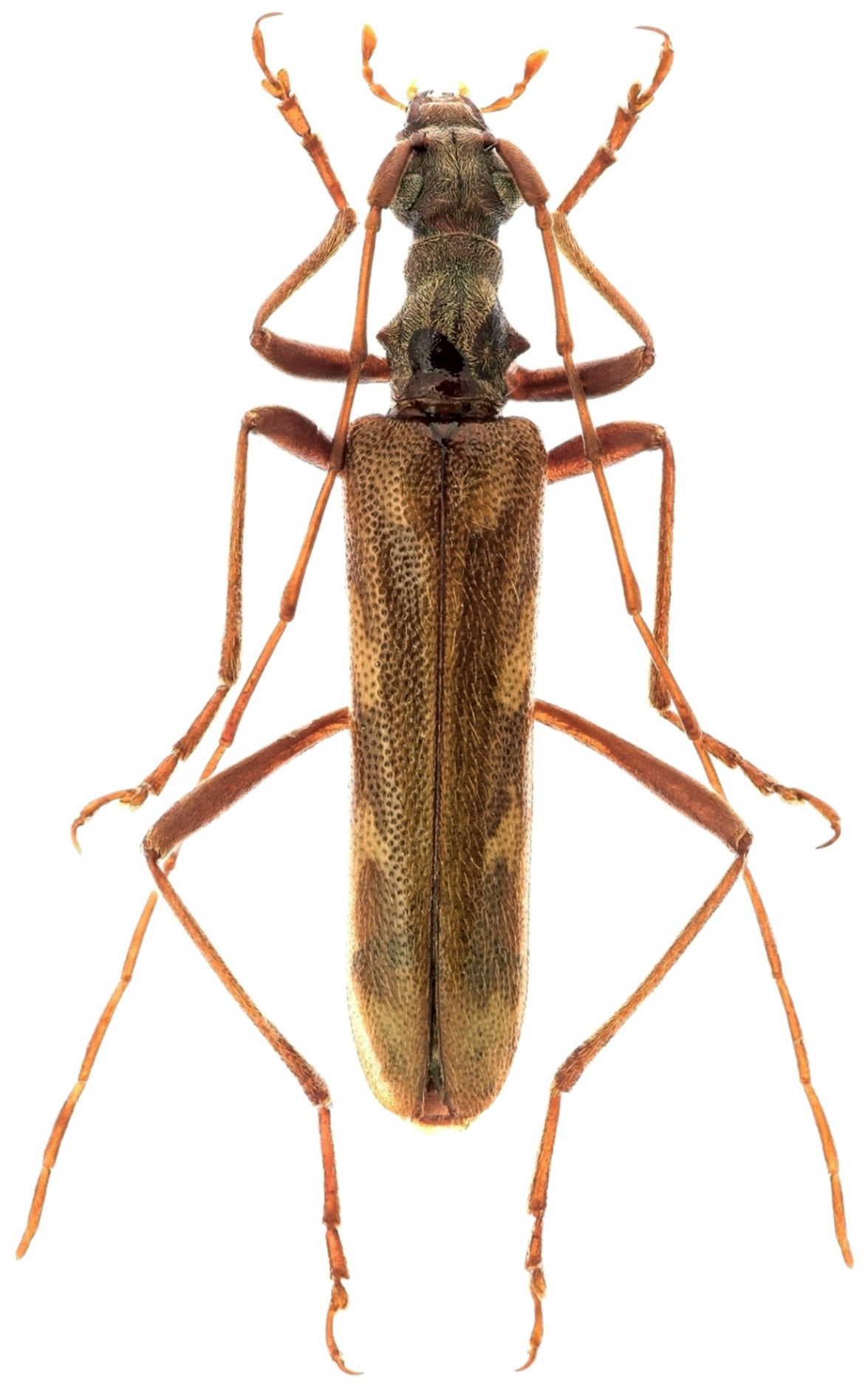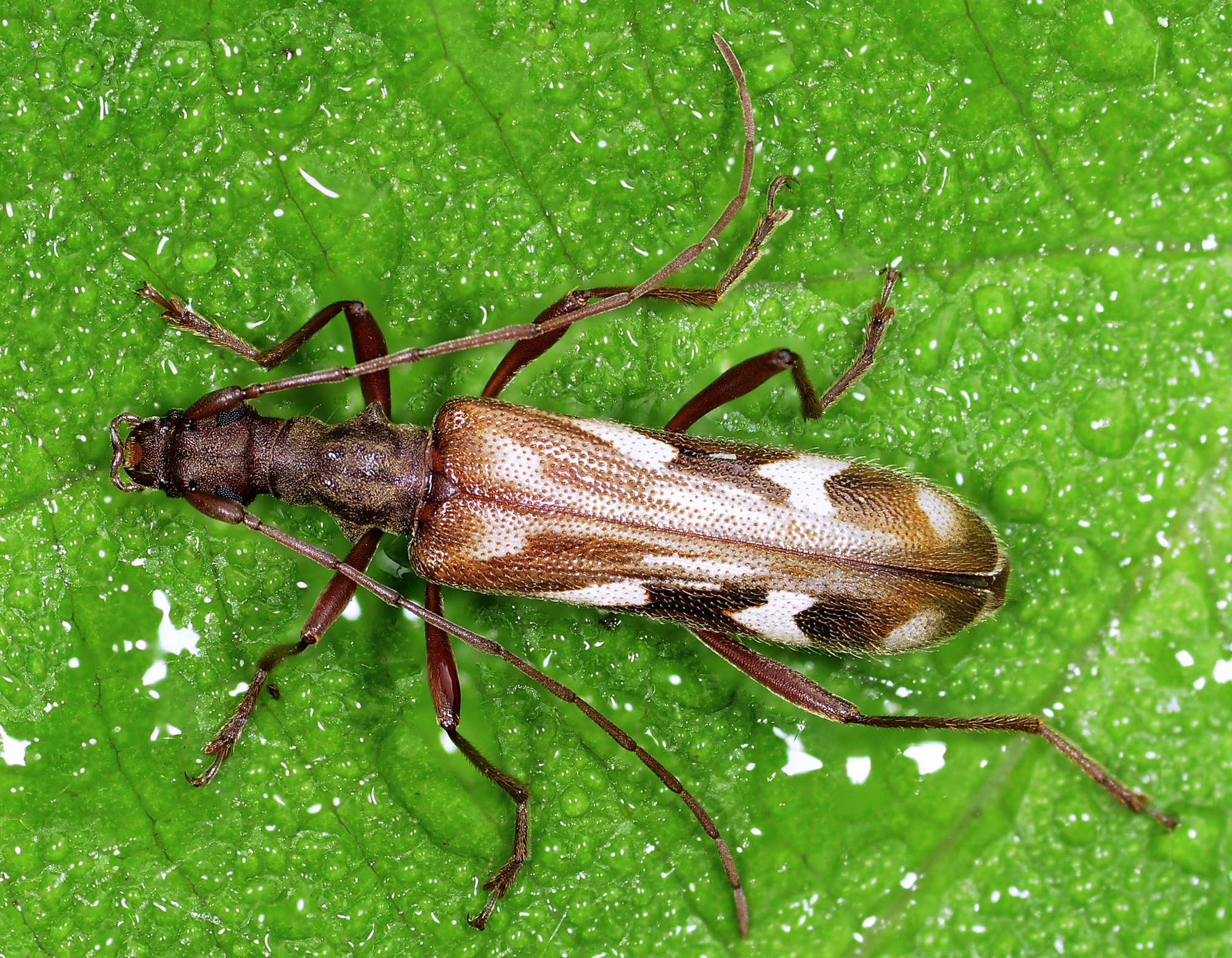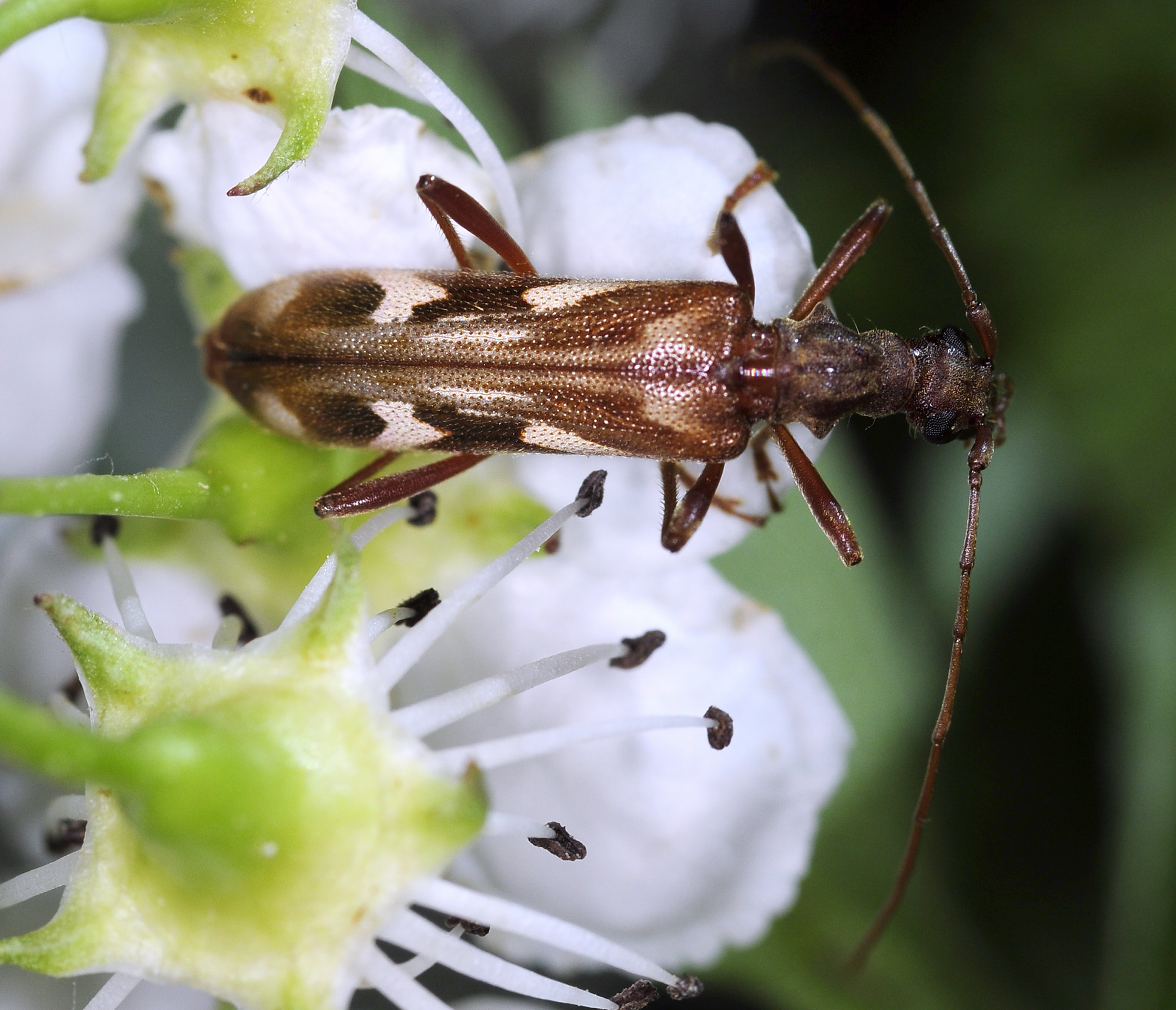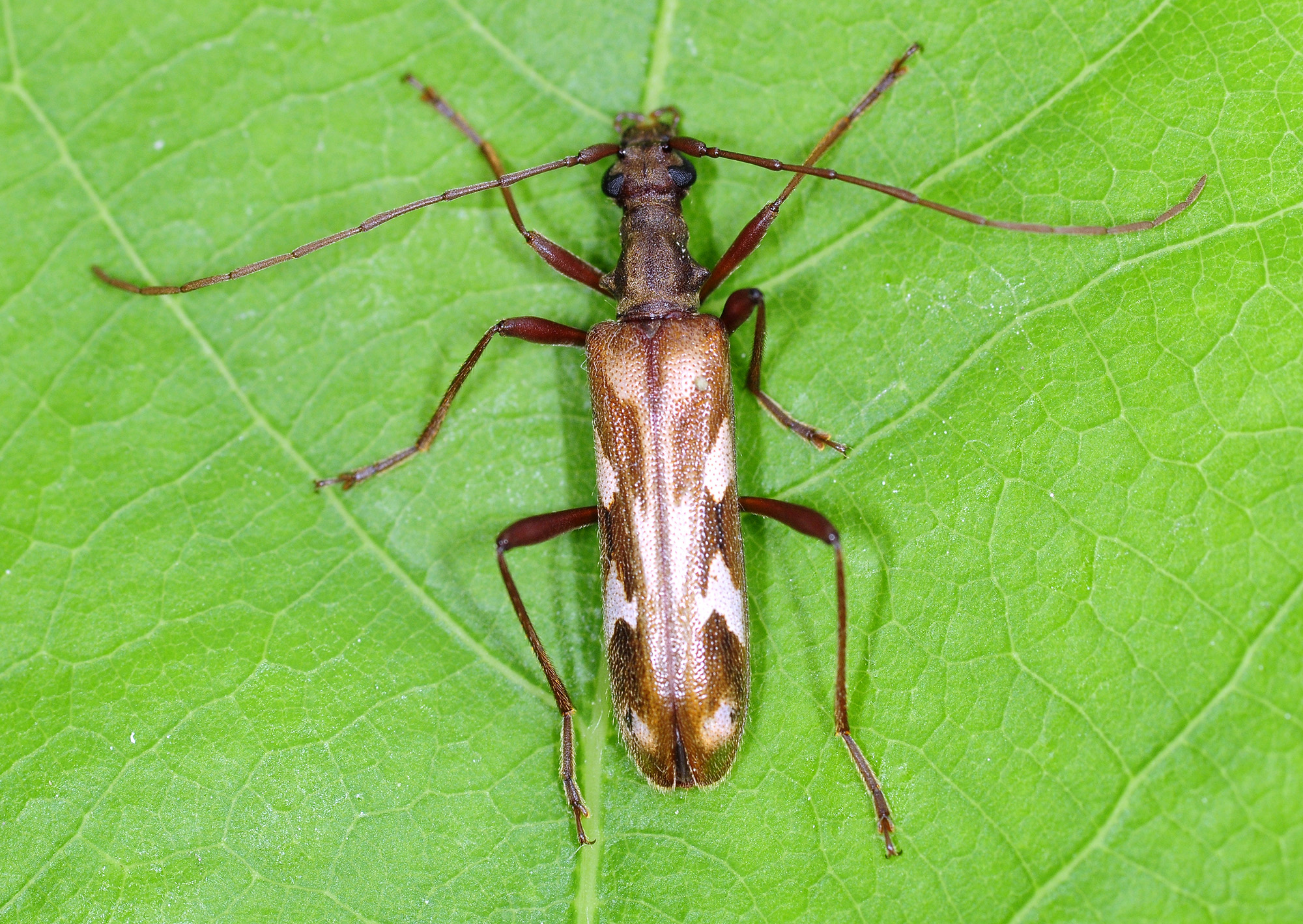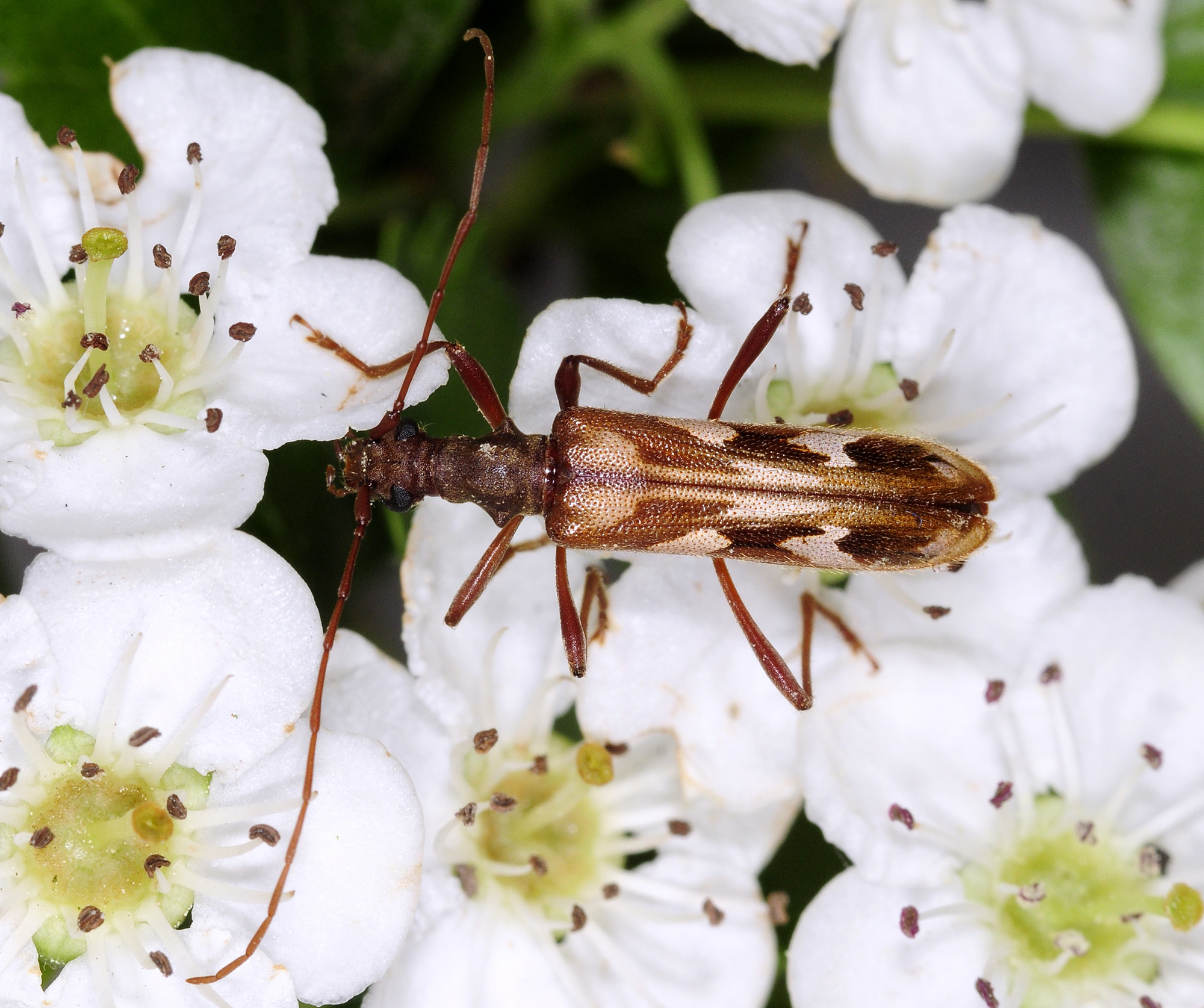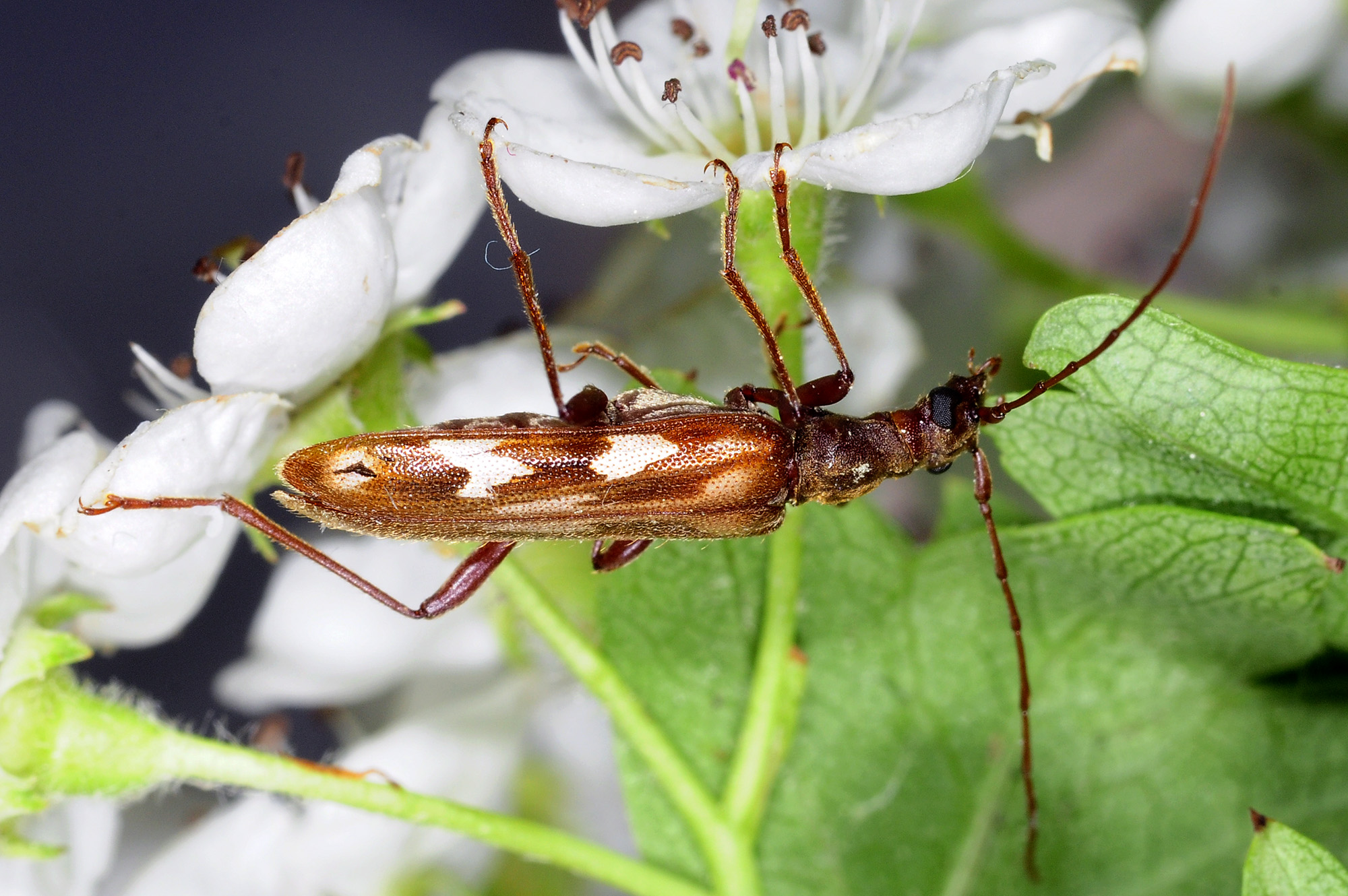Leptorhabdium caucasicum, a Caucasian / Transcaucasian species, has been described from "Caucasus" as Psilorhabdium caucasicum by Gustav Kraatz in 1879 [▽].
Larvae of this interesting and not common bettle develop in rotting wood of thick trunks of various deciduous trees lying under the forest canopy, often together with larvae of a related species Xylosteus caucasicola.
Pupation and hatching in wood in late summer - early autumn (overwinters as adult), life cycle at least 2 years. Adults, active from April to July, at dusk visit the blossoming trees and shrubs (e.g. Cornus,
Crataegus, Acer). Beetles can be found occasionally in large numbers, with males significantly predominating over females. Adults are sometimes attracted by the light [✧].
| Body length: | ♂♂ 10 - 13 mm / ♀♀ 11.5 - 18 mm |
| Life cycle: | 2 - 3 years |
| Adults in: | April - July |
| Host plant: | polyphagous in decidudous trees (Carpinus, Fagus, Quercus, Acer, etc.) |
| Distribution: | Russia (Caucasus), Armenia, Azerbaijan, Georgia, Turkey |
The depicted living beetles were collected on blossoming hawthorn (Crataegus sp.) in Norio (ნორიო) environs (Kvemo Kartli region, Georgia) in May 2016.
Collected by Petr Jelínek
[▽]
Kraatz G.:
Ueber die mit der Bockkäfer-Gattung Xylosteus verwandten, zum Theil neuen Genera.
Deutsche entomologische Zeitschrift, Berlin 23 (1): 118, 1879.
[download  ]
]
[✧]
Danilevsky M.L.:
Longicorn beetles (Coleoptera, Cerambycoidea) of Russia and adjacent countries. Part 1.
Moscow: Higher School Consulting 1: 522pp [pages 67-68], 2014.
[download  ]
]
